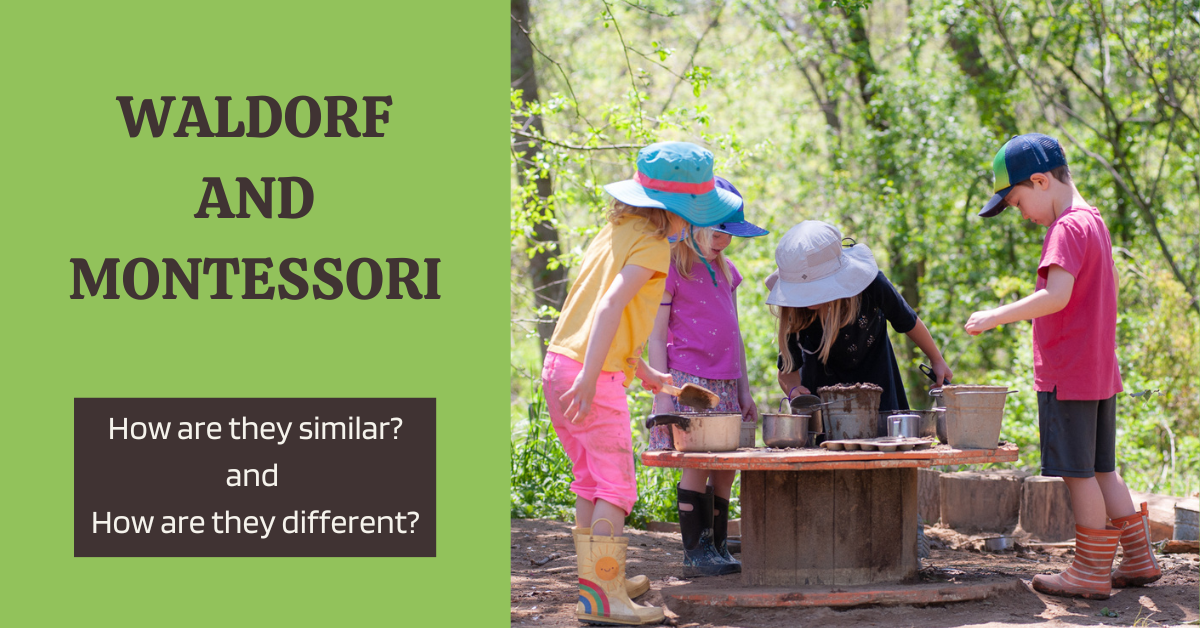Montessori and Waldorf education are popular choices in the world of early childhood programs. Parents often explore both of these options because of their similarities: they’re private schools that focus on respecting child development, inspiring curiosity, and engaging in hands-on learning. Both of these educational philosophies also center on developing the whole child, however, the way they approach this calling distinctly varies.
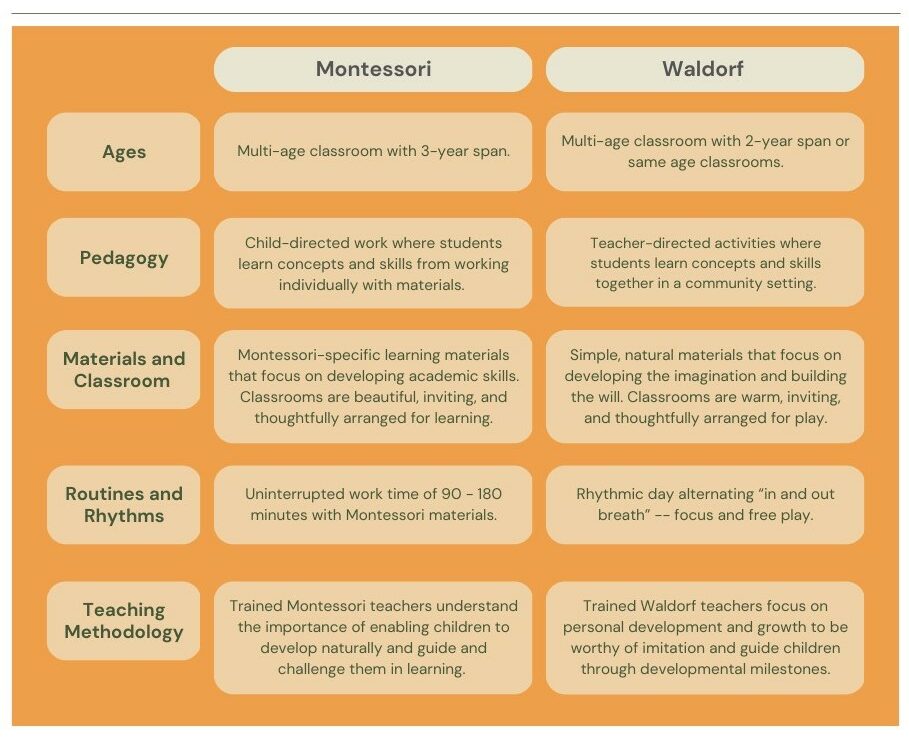
Founders and Philosophies:
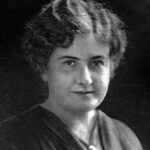
In 1911, Dr. Maria Montessori, an Italian educator, physician, and scientist, set out to work with disadvantaged children. She observed that students thrived when engaging in practical work and hands-on learning introduced by elements in their surroundings. She realized that by curating the child’s surroundings, she could guide their interests and curiosity toward absorbing work that builds key academic skills.
According to the American Montessori Society: “Components necessary for a program to be considered authentically Montessori include multi-age groupings that foster peer learning, uninterrupted blocks of work time, and guided choice of work activity. In addition, a full complement of specially designed Montessori learning materials is meticulously arranged and available for use in an aesthetically pleasing environment. The teacher, child, and environment create a learning triangle. The classroom is prepared by the teacher to encourage independence, freedom within limits, and a sense of order.”
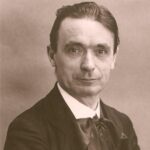 In 1919, Rudolf Steiner, an Austrian philosopher, educator and scientist, set out to put his understanding of human development into practice by creating a school for the children of parents working in a local factory. The goal was to develop a child’s mind, body and spirit by cultivating the imagination, awakening a sense of truth and inspiring a feeling of responsibility.
In 1919, Rudolf Steiner, an Austrian philosopher, educator and scientist, set out to put his understanding of human development into practice by creating a school for the children of parents working in a local factory. The goal was to develop a child’s mind, body and spirit by cultivating the imagination, awakening a sense of truth and inspiring a feeling of responsibility.
From International Association for Steiner Waldorf Early Childhood Education: “An atmosphere of loving warmth and guidance that promotes joy, wonder, and reverence [is needed to] support healthy development. The most essential aspect of the work with the little child is the inner attitude of the educator, who provides the example for the child’s imitation. Therefore the work of the Waldorf educator demands an ongoing process of research and self-education… In Waldorf nursery-kindergartens, foundations are laid for later learning and healthy development, including life-long physical, social, emotional, intellectual, and spiritual growth.”
Curriculum
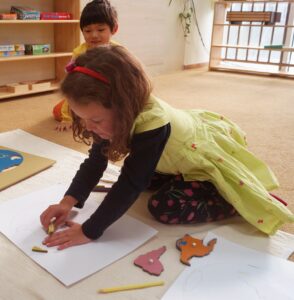
Montessori Student Working on Geography Puzzle Map
When we talk about the curriculum of a Montessori school compared to a Waldorf school, the key differences immediately come to light because of the way in which each method defines “curriculum.” In Montessori, curriculum is a set of academic subjects introduced. In Waldorf, curriculum is a set of activities that develop learning capacities.
For example, in Montessori preschools, children learn mathematics through math work. This involves working with materials to help identify numbers, match them to their quantity, understand place-value and the base-10 system, and practice addition, subtraction, multiplication, and division.
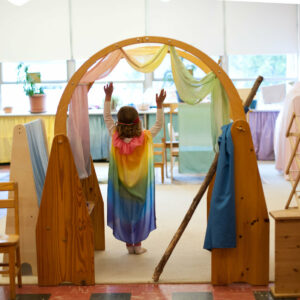
Waldorf Student Engaged in Imaginative Play Time
In Waldorf preschools, no traditional mathematics are taught, however, pre-academic work to develop math skills take place through activities such as finger knitting, table setting, counting leaves or friends, sorting, exploring cause and effect, and gaining spatial awareness in movement and art.
In both preschool environments, there is special care taken to work on children’s sensory awareness and movement along with encouraging students to engage in practical life tasks like washing dishes, caring for plants, or preparing snacks as a few examples.
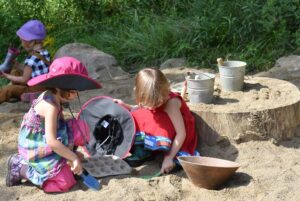
Waldorf Students Spend Many Hours Outdoors Playing
Different Montessori schools have different priority levels regarding outdoor time, whereas all Waldorf schools place a high priority on the outdoors and connecting with nature. Waldorf preschools also prioritize the arts and the development of the imagination through music, puppetry, dance-like movement, painting, drawing, and knitting. While Montessori preschools prioritize academics and explore basics of geography, history, reading, writing, math and art.
The best way to understand the differences in both these educational approaches is to see them in action! We encourage all parents to tour and observe early childhood classrooms while they are in session and students are engaged with one another and their teachers.
Here are some quotes from Rudolf Steiner and Maria Montessori…
“The greatest gifts we can give our children are the roots of responsibility and the wings of independence.” – Maria Montessori
“Our highest endeavor must be to develop free human beings who are able, of themselves, to impart purpose and direction to their lives.” – Rudolf Steiner
“The goal of early childhood education should be to activate the child’s own natural desire to learn.” – Maria Montessori
“Education is an art – it must speak to the child’s experience. To educate the whole child, the heart and the will must be reached, as well as the mind.” – Rudolf Steiner
“The greatest sign of success for a teacher… is to be able to say, ‘The children are now working as if I did not exist.’” – Maria Montessori
“You must be for the children the representative of the good, the true, and the beautiful. The children must be drawn to truth, goodness, and beauty simply because the children are drawn to you.” – Rudolf Steiner
If you have any questions about Spring Garden Waldorf School or would like to tour and observe our classrooms, please call or email our Admissions Director, Rocky Lewis at admissions@sgws.org or 330-660-0574.
Sources:
American Montessori Society
Association of Waldorf Schools of North America
International Association for Steiner Waldorf Early Childhood Education
Waldorf Early Childhood Association of North America
Association Montessori Internationale

